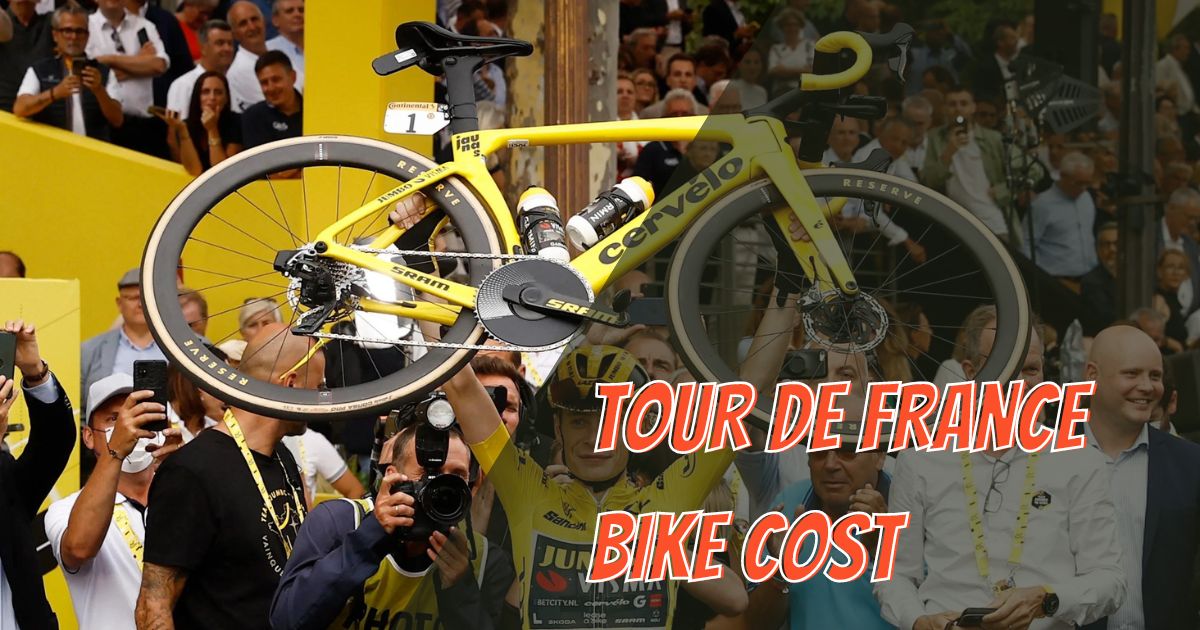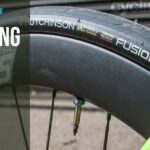Imagine the exhilaration of the Tour de France – the world’s most prestigious cycling event. It’s not just about the cyclists’ strength or endurance; it’s also a showcase of the finest cycling technology on the planet. At the heart of this spectacle lies a super important, often overlooked component: the bike itself. These aren’t your run-of-the-mill bicycles; they’re feats of engineering, designed to deliver victory. But what’s the cost of owning such a marvel? This blog post will take you on a journey into the intriguing world of Tour de France bike costs.
How much does a Tour de France bike cost?
The cost of these bikes often reflects the pinnacle of what’s possible in cycling technology. However, the question arises: is the most expensive bike always the best?
The Price Range: From Accessible to Astronomical
In answering how much a Tour de France bike costs, it’s super important to consider both the cheapest and the most expensive bikes in the peloton. The cost disparity is notable, and it prompts a deeper exploration of value versus performance.
- The Most Accessible Tour Bike in the U.S.
- The Canyon Aeroad, ridden by teams like Alpecin-Deceuninck and Movistar, is the most affordable Tour bike available in the U.S., priced at about $8,500. However, this comes with certain differences from the team version, such as Rotor cranks and DT Swiss wheels for consumers, while the teams use different components.
- The Cheapest Bike in the 2023 Tour
- The most economical bike in the Tour is the Dare VSRu, used by Team UNO-X. It’s priced at approximately $7,450, equipped with a full Dura-Ace groupset and DT Swiss ARC 1400 carbon wheels. Unfortunately, this bike isn’t available for purchase in the U.S.
- The Priciest Contender
- On the higher end of the spectrum is the Colnago V4Rs ridden by UAE Team Emirates, costing around $18,000. This includes premium components like a Darimo seatpost, Carbon-Ti chainrings, and the unreleased Enve one-piece handlebar, contributing to its steep price.
Performance vs. Price: A Surprising Reality
Interestingly, the correlation between the bike’s cost and a team’s performance isn’t straightforward. Team UNO-X, despite using the least expensive bike in the race, ranks impressively high in terms of prize money, outperforming many teams with more expensive bikes. This observation challenges the common belief that a more expensive bike automatically equates to better performance.
The Diminishing Returns of High-Cost Bikes
While top-tier bikes boast advanced technology and superior materials, there’s a point beyond which the performance gains become marginal. For most cyclists, a well-built aluminum frame bike around $3,000 could offer significant performance without the steep price tag of elite models. Beyond this, the differences in performance increasingly depend on the rider’s skill and ability rather than the equipment’s cost.

Factors Shaping the Cost of a Tour de France Bike
The astronomical cost of a Tour de France bike is influenced by a combination of advanced materials, aerodynamic design, innovative technology, and customization. Understanding these factors provides insight into why these bikes carry such a hefty price tag.
1. Cutting-Edge Materials: The Backbone of Performance
The choice of materials is paramount in crafting a Tour de France bike:
- High-Modulus Carbon Fiber: This material is favored for its exceptional strength-to-weight ratio, offering both lightness and rigidity, which are super important for efficient power transfer.
- Exotic Additions: Some bikes incorporate materials like titanium and ceramics, known for their durability and lightweight properties. These materials, while enhancing performance, significantly increase the bike’s cost.
2. Aerodynamic Optimization: The Pursuit of Speed
Aerodynamics play a critical role in the design of a Tour de France bike:
- Wind Tunnel Testing: Bikes are often developed with extensive wind tunnel testing to ensure every contour is optimized for aerodynamic efficiency.
- Detail-Oriented Design: From tube shapes to wheel design, every aspect is scrutinized to minimize air resistance, which often involves proprietary technology and design, adding to the cost.
3. Electronic Systems: Precision at a Price
Advanced technology is a staple on these bikes:
- Electronic Shifting: This system allows for rapid, precise gear changes, a significant advantage in high-stakes racing scenarios.
- Electronic Braking: Similarly, electronic braking systems provide instant, reliable braking, super important for the safety and performance of the rider. These systems add a substantial amount to the bike’s overall cost.
4. Customization and Weight Optimization: Tailored for Victory
Personalization is key in professional cycling:
- Custom-Built for the Rider: Each bike is tailored to the individual rider’s body dimensions and riding style, making sure maximum comfort and efficiency.
- Component Selection: The choice of components, such as the saddle, handlebars, and pedals, is made based on the rider’s weight and power output, further customizing the bike to the rider’s needs.
5. Sponsor Exclusivity and Cutting-Edge Technology
Sponsorship plays a super important role in the bikes used in the Tour de France:
- Exclusive Components: Many bikes are equipped with components that are not yet available to the public, often prototypes or the latest advancements from major cycling brands.
- Showcasing Innovation: These exclusive components not only provide a competitive edge but also serve as a showcase for the brand’s innovation, contributing to the bike’s exclusivity and, consequently, its cost.

Can You Own a Tour de France Bike? (Yes, But With Caveats)
The allure of owning a bike akin to those used in the Tour de France is undeniable. While it may seem out of reach, there are feasible ways for cycling enthusiasts to get closer to this dream:
Replica Models: Your Accessible Option
Several brands offer replica versions of their Tour de France bikes. These replicas usually feature the same frames and major components used in the actual race but come at a more accessible price point. This allows enthusiasts to experience a slice of the Tour de France without the exorbitant cost.
The Used Market: A Treasure Trove of Deals
Professional cycling teams often update their fleets annually, resulting in a market for gently used, high-end bikes. These pre-owned bikes offer an opportunity to own a piece of Tour de France history at a fraction of the original price.
Custom Builds: Tailor-Made to Your Preference
For those seeking a more personalized touch, custom-built bikes are an exciting option. Reputable bike builders can replicate the specifications of a Tour de France bike, blending high-end components with more budget-friendly alternatives to strike a balance between performance and cost.
Owning a Tour de France bike, or a close approximation, is within the realm of possibility, provided you’re aware of these options and their respective caveats. Whether it’s through replicas, the used market, or custom builds, the essence of the Tour can be captured in your very own ride.







